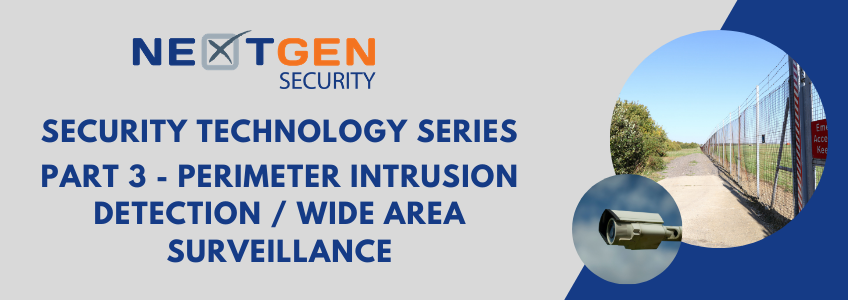Problem: A company relying on a fenced in perimeter continues to have theft incidents from outsiders occur on site. How do they achieve a lower rate of incidents?
Answer: Through the implementation of an outer layer of security measures to detect intrusions and allow security personnel to initiate a response before the theft can occur.
There is an old security adage which states “fences are to keep out honest people”. It means that a fence line, even an intimidating looking one, is a very easy obstacle for a person, with intent to do you harm, to bypass. A properly designed security plan consists of layered security measures and the first layer of a facility starts at the perimeter with other security layers put in place for detection and delay as you get closer to a facility’s assets. In high risk / high threat level environments the deployment of a Perimeter Intrusion Detection System (PIDS) or Wide Area Surveillance System (WASS) is considered a Best Practice.
NextGen offers best in class perimeter intrusion detection and wide area surveillance solutions. The difference between Perimeter Intrusion Detection and Wide Area Surveillance is that a PIDS application concentrates on detecting unauthorized activity at a facility’s fence line, while a WASS detects unauthorized activity in an area surrounding a fence line and typically can provide an operator more accurate information about the intrusion once the perimeter has been breeched. Both systems require a sensor for detecting an intrusion and an adequate means of assessing what the detection alarm is. Detecting Activity without a means of providing enough detail of what the detection is, is useless information relative to a security plan.
If you can’t see it, you can’t see it coming. It is imperative to the success of a PIDS or WASS application to ensure that the operator receiving the alarm has the ability to see the activity, while it is occurring and in any environmental condition. For instance, having the ability to use a daylight quality camera for an alarm does an operator no good in low light conditions. An assessment camera should always deliver usage video and should have the ability to provide enough detail for assessment throughout the whole alarm area. Some technologies to consider are thermal imaging combined with a visual spectrum camera or LED Infra-Red (IR) enhanced visual spectrum video.
Thermal imagers can work in total darkness, require low power and have the ability to see at pretty long ranges. Active infra-red illumination is actually energy that, while not visible to the human eye, can be seen by a high-quality surveillance camera. Infrared illuminators are designed to provide enhanced lighting for visual spectrum camera and can come as a fixed array (like a flood light) or can be integrated with a fixed or PTZ camera. Both technologies have advantages and disadvantages and a strong system design combines the complimentary technologies.
In terms of detection itself, there are two basic types of sensor technologies. Linear detection is sensor technology which sits directly on the fence line and is typically defined as part of a PIDS. Volumetric detection is sensor technology which detects activity throughout a predetermined area. It can be used as part of a PID or WAS system. Examples of a linear PIDS type sensor is a fiber optic motion cable, which detects climbing and cutting. Examples of volumetric detection sensors are microwave, buried cable, radar, and thermal video analytics.
There is no perfect sensor technology solution. All sensors have advantages and disadvantages to be considered during the design process. As with all layered security plans, combining complimentary technologies as part of the design provides the most accurate detection capabilities.
NextGen Security has the expertise and experience with all of the sensor and assessment technologies on the market. We thoroughly vet all our technology partners and have an in house engineering lab in which we test and integrate our solutions before they are implemented as part of the design process. Protecting people and property is priority one for NextGen. Turn to NextGen to be your trusted advocate for your perimeter intrusion detection technology solutions. We will work with your team to ensure you are getting the best value and a balanced design for your layered security approach.

